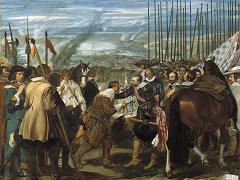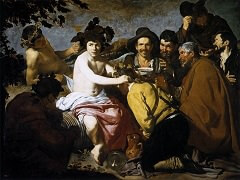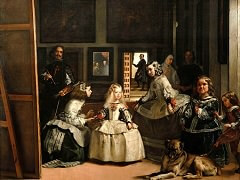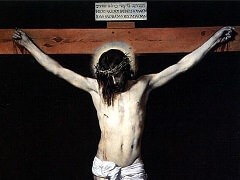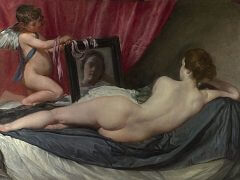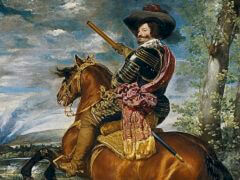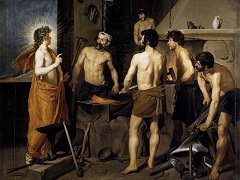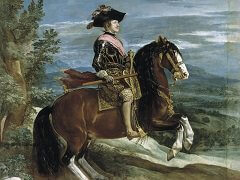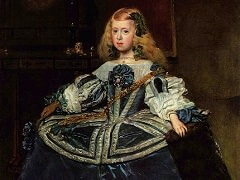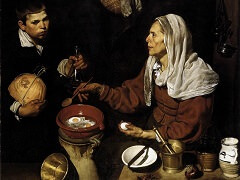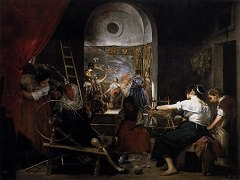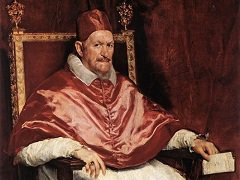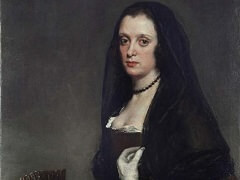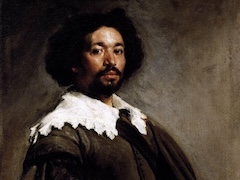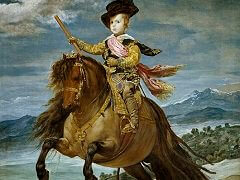St Anthony Abbot and St Paul the Hermit, 1635 by Diego Velázquez
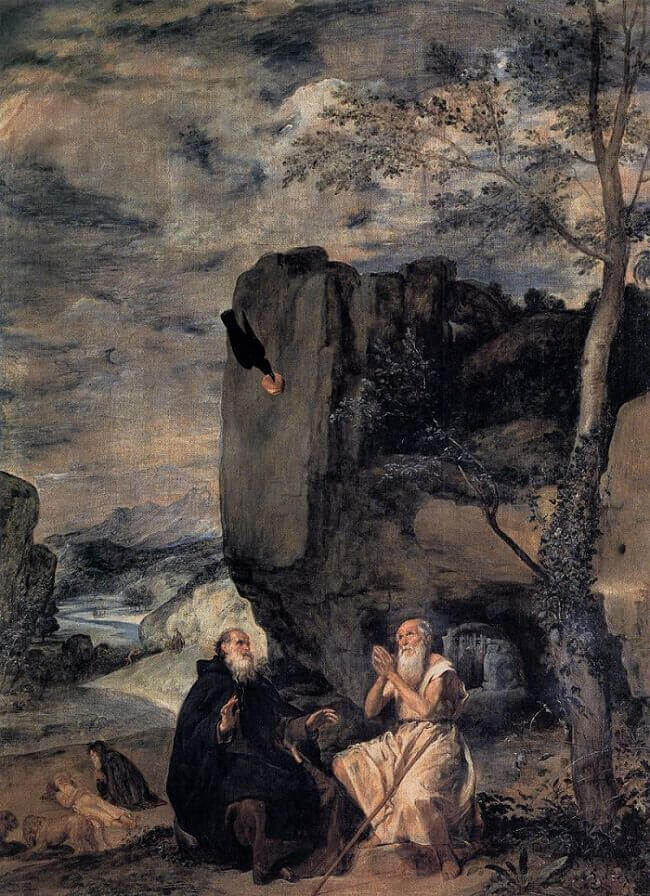
In 1630 the count-duke of Olivares decided to initiate a lavish program of artistic display by the construction of a new pleasure palace on the eastern border of Madrid which came to be known as the Buen Retiro. Here theatrical plays and spectacles would be staged, tournaments and jousts would be organized, and painting, sculpture, and tapestry would be displayed. Beginning in 1630 with a modest renovation of the royal apartment in San Jerónimo, the project was expanded in 1632 and again in 1633, culminating in a sizable complex of buildings surrounded by enormous gardens adorned by fountains, alleys and hermitage chapels. Once the structure was finished, Olivares faced with the mammoth problem of decorating the new palace, a problem that was solved by hundreds of pictures from Italy and Flanders and by commissioning as many works from local artists as they could paint. As for the works by royal artists and their disciples, the decoration of the Retiro was the major event of the 1630s and thus is a microcosm of court painting during the decade.
The earliest of Velázquez's contributions to the decoration of the Retiro is the luminous St Anthony Abbot and St Paul the Hermit, his first picture with an extensive landscape background. It was probably commissioned for the Hermitage. This picture shows several scenes from the legend of these saints simultaneously. In the background, St Anthony is asking a centaur the way to the hermit Paul. As he goes on he meets a homed monster with goat's feet, and on the right he is knocking on the door to the cave. The main scene shows the raven bringing the two saints a loaf of bread from heaven. To the left, we see the closing sequence: two lions are digging a grave for St Paul while St Anthony prays beside his corpse.
Various models have been suggested for this composition, including a woodcut by Albrecht Dürer for the group of figures. The woodcut also shows the raven flying down to bring the hermits a loaf of bread, in the same attitude as in Velázquez's painting. A model for the landscape, of which we have an aerial view, has been traced in the so-called world landscapes of the Flemish artist Joachim Patenier, and the sketch-like dynamics of the brushwork and transparency of the colouring are reminiscent of similar pictures by Peter Paul Rubens.

